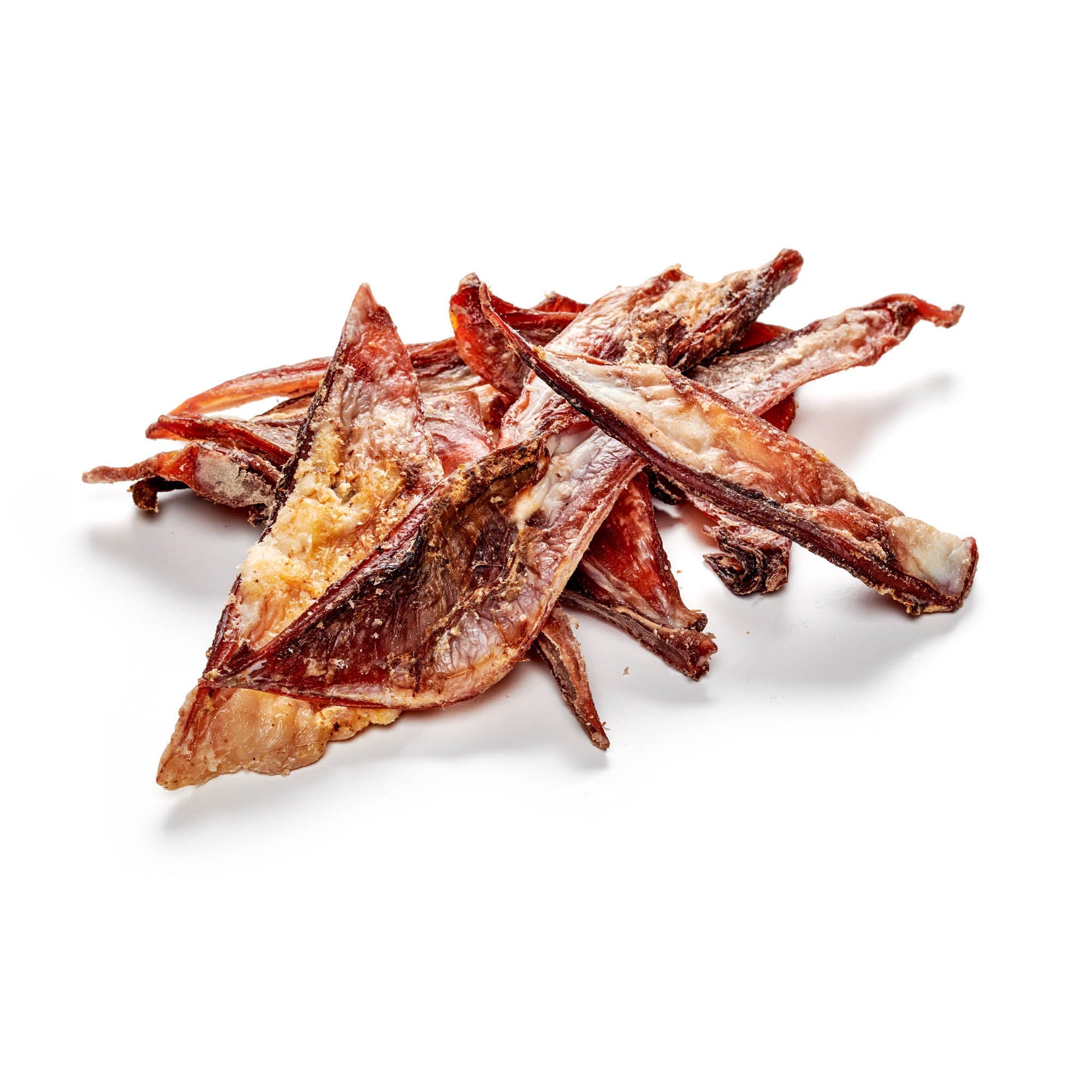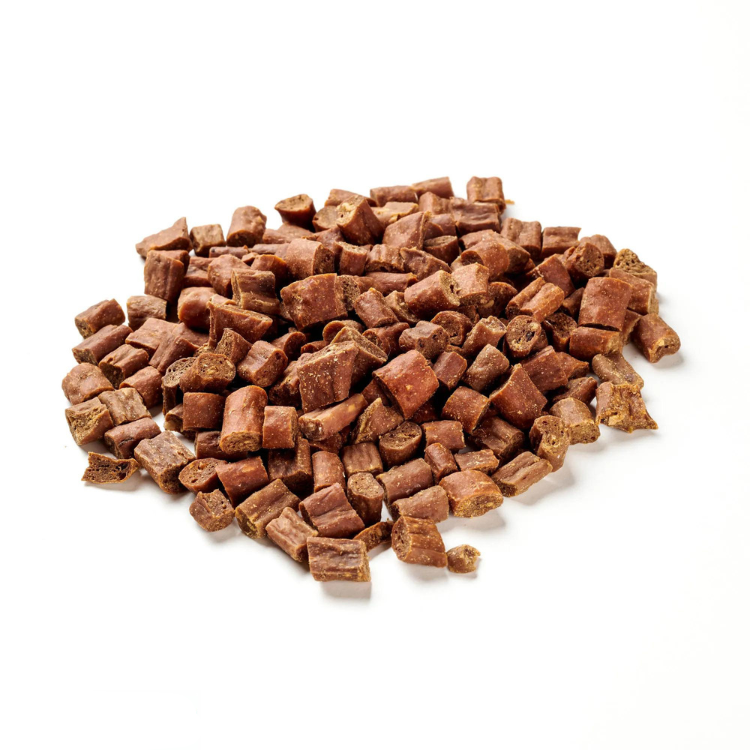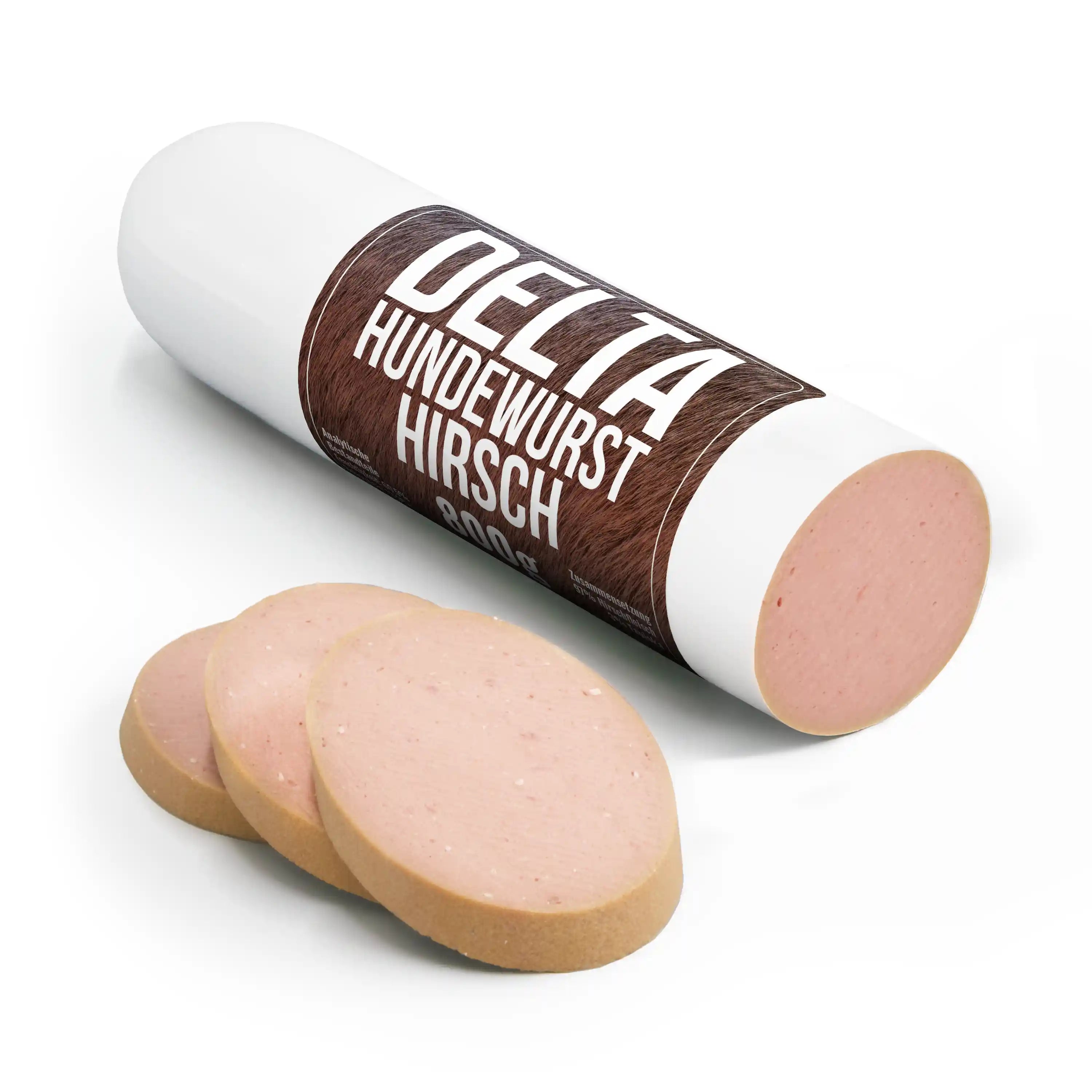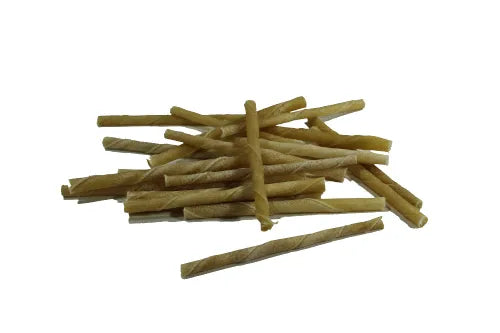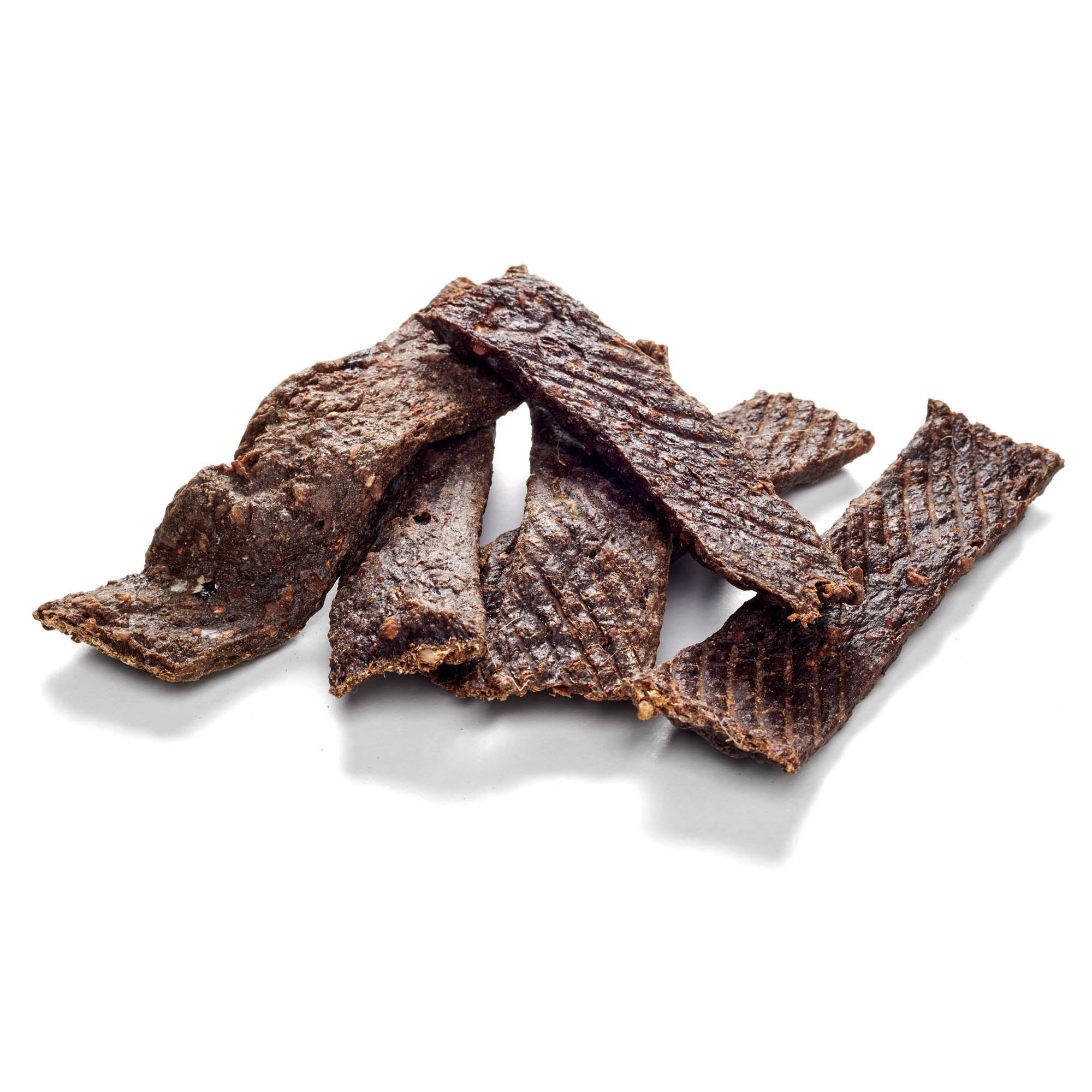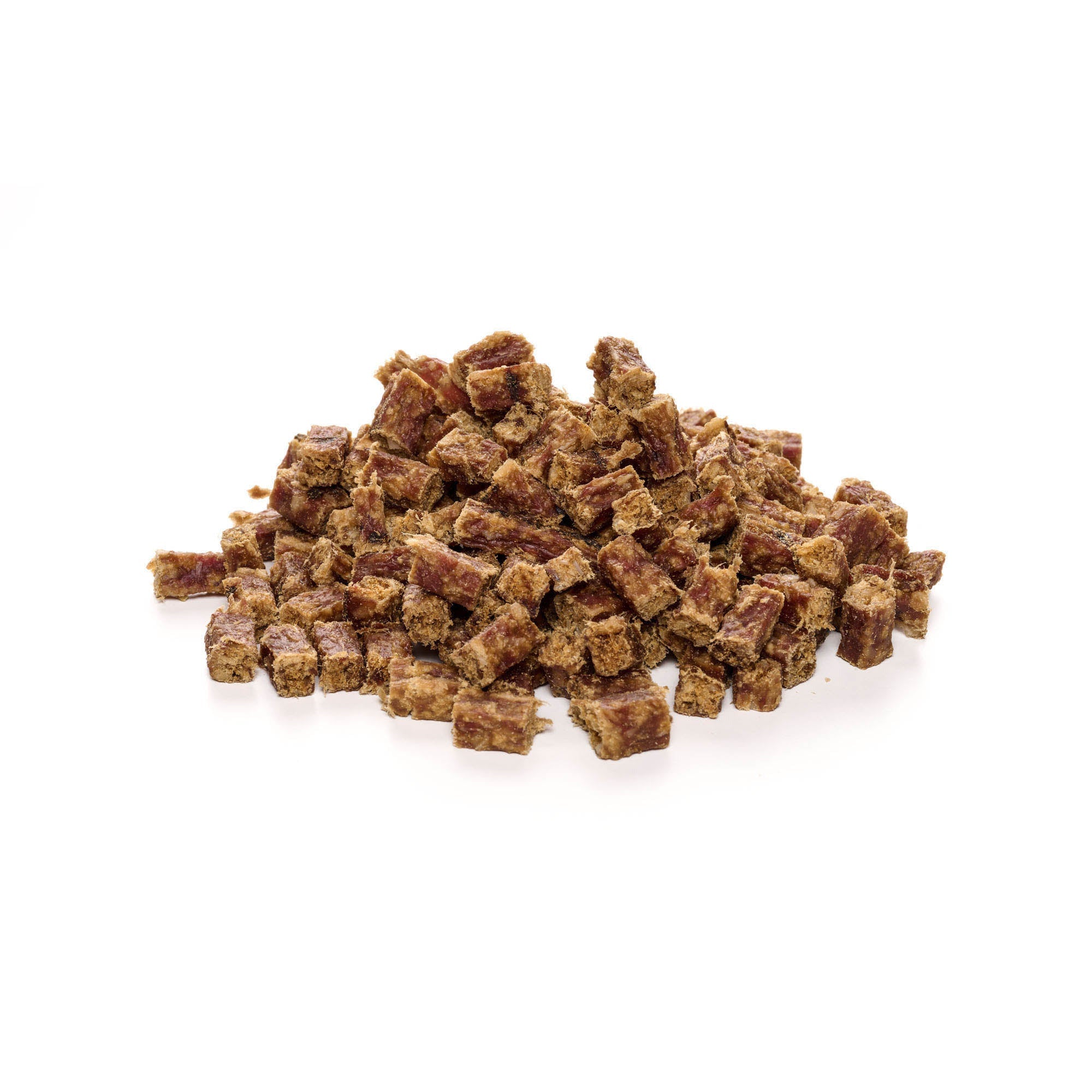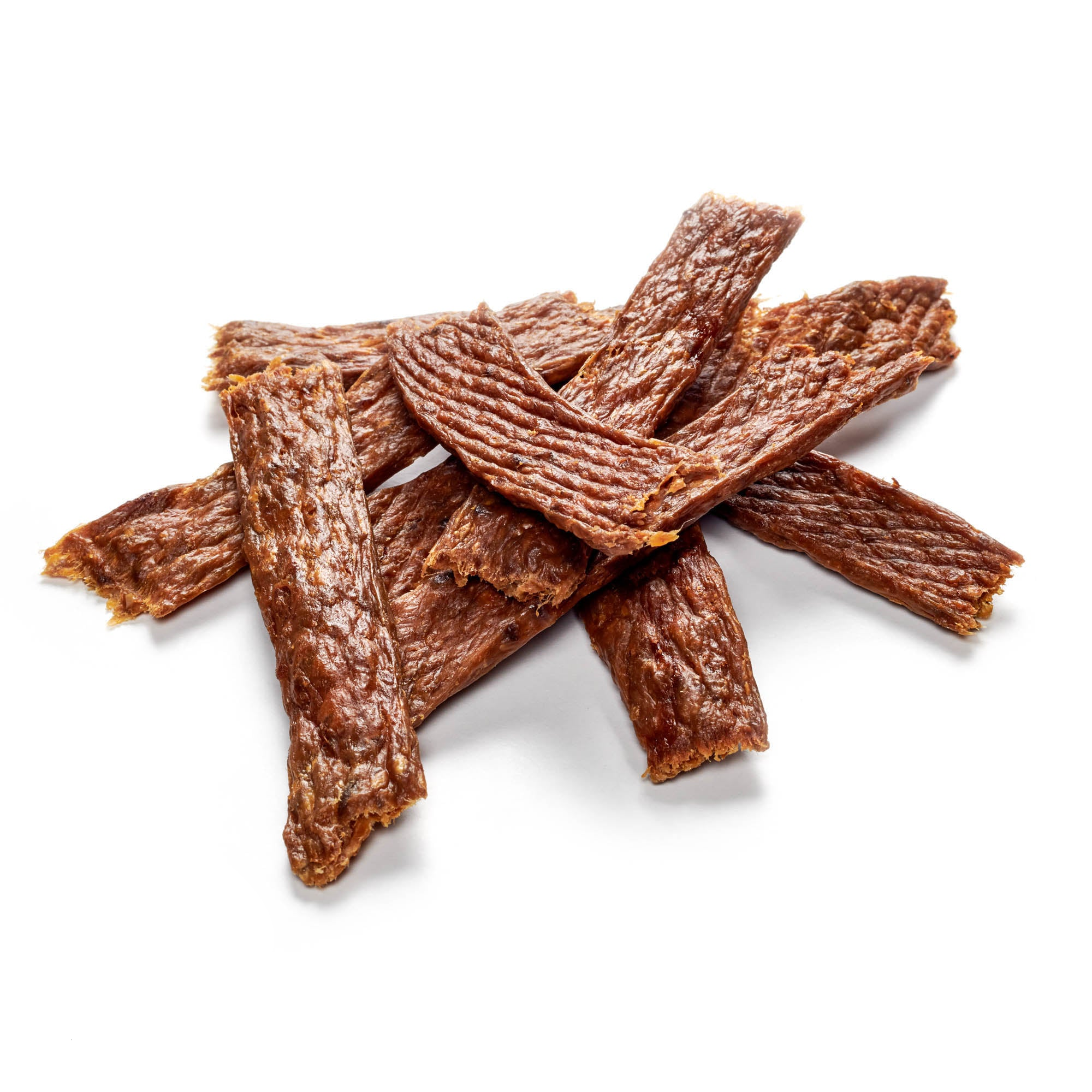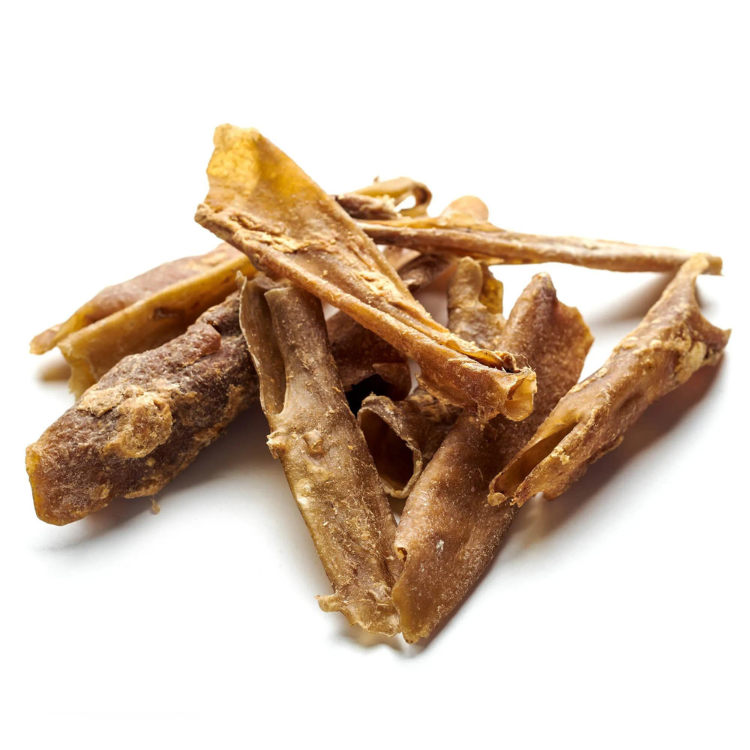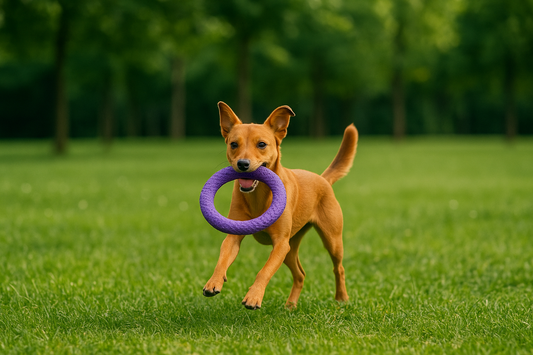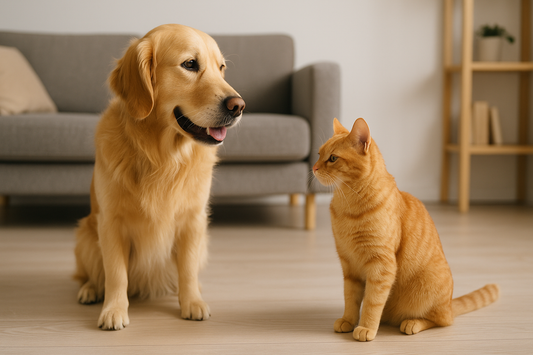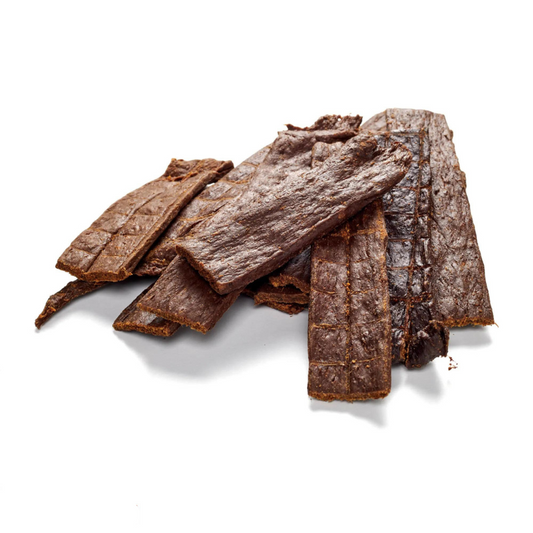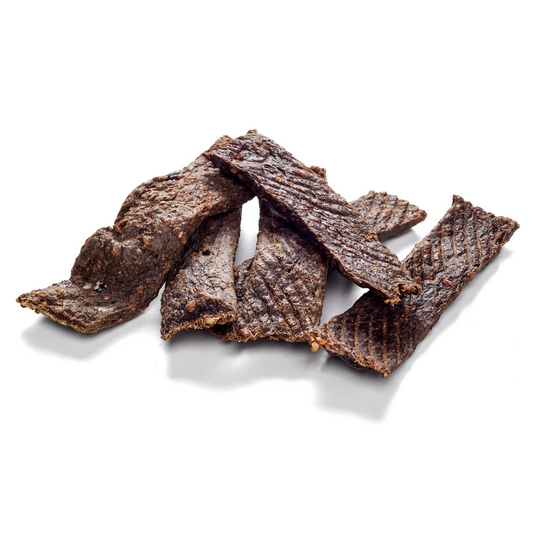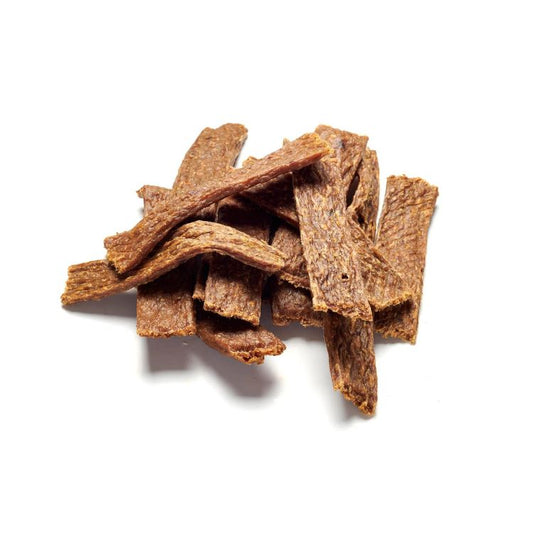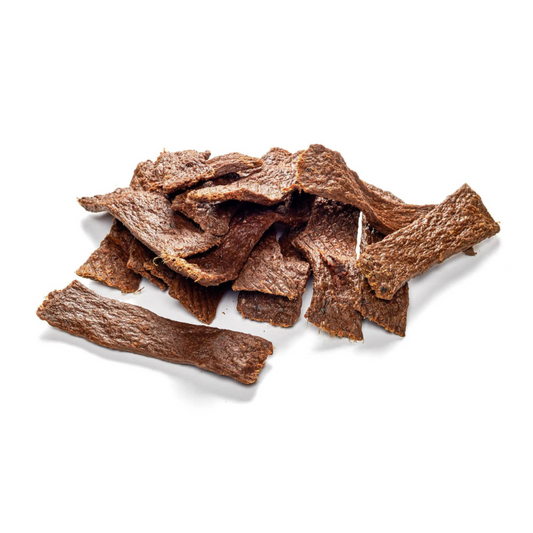
Greyhound
Share
The Greyhound is famous for its breathtaking speed of up to 80 km/h and is often described as the fastest dog in the world. Originally bred for hunting, it is an elegant companion and a loyal family dog. It loves both action-packed sprints and cozy times on the sofa.
Content: Greyhound
- profile
- Special features
- Nutrition
- Health and care
- Origin & History
- The right accessories
- Conclusion
Pamper your dog with our delicious chews!
Greyhound - Profile
- Character: Gentle, calm, independent
- Size: Large
- Height: 68-76cm
- Weight: 27-40 kg
- Life expectancy: 10-14 years
- Coat type: Short, smooth
- Colour: Black, white, red, blue, fawn, brindle and various shades
- FCI Group: Sighthounds
Greyhound - Special Features
Also known as the fastest dog in the world, the Greyhound owes its name to its original purpose - hunting. This breed was specifically bred to hunt small game, and this primal instinct is deeply embedded in their genes. It is almost impossible to completely train out this instinct. Instead, it makes sense to harness the natural energy of these dogs and express it in various activities. A popular pastime is running alongside a bicycle, although caution must be exercised as when a Greyhound spots a nimble prey such as a hare, it is capable of incredible speeds. Racing clubs also offer a great way to satisfy these dogs' hunting instincts. Coursing, a form of greyhound racing, allows Greyhounds to fully express their speed and agility while chasing an artificial lure. This resembles the natural prey behavior of hares and brings them great joy. However, despite their wild side, Greyhounds are calm at home and love to relax on the sofa and receive lots of affection. Many even claim they have never heard a Greyhound bark.
Greyhound - What should be considered regarding nutrition?
Simply opening a can and serving ready-made food are not options in dog ownership. Even though the Greyhound is not considered a gourmet, a balanced diet is of great importance, just like with any other dog. Quality should always come before quantity. As a rule, the Greyhound is fed twice a day, and both wet and dry food can be good choices. The diet can be enriched with healthy supplements such as curd , cottage cheese, oatmeal or chopped fruit. The exact amount to feed depends on various factors such as the dog's constitution, its age and its activity level. The breeder can usually give valuable recommendations on feeding the puppies . It is advisable to avoid food with flavor enhancers or added sugar. Treats and rewards should be offered in moderation and should not replace the main meals.
Delicious chews for your faithful companion now available!
An ideal place for a Greyhound is a large, fenced property. Because of their tendency to hunt, a secure fence is important to protect them from dangerous situations. Greyhounds love short sprints and do not require much endurance training. A secure fence allows them to exercise their sprinting abilities. They are easy to walk on a leash because they are leash-walking.Greyhounds are hardy dogs and less prone to disease than some people think. They are easy to care for because they shed little, bark little and have no odor. However, they are sensitive to extremes of temperature, both cold and heat. In winter they should be kept warm, in summer walks are best early in the morning or late in the evening. Grooming with brushes or nubby gloves is important. Greyhounds should not be kept in kennels because they do not tolerate temperature extremes well.
Greyhound - Origin & History
The Greyhound is an ancient breed of dog with a rich history. Originally bred in Egypt, they were later used in England for hunting and racing. Systematic breeding began about six centuries ago. While they were once reserved for the nobility, they were later bred for racing. However, this also led to many Greyhounds being killed after their racing careers, especially in Ireland. Fortunately, there is the option of adopting Greyhounds from Ireland rather than buying them from the breeder.
Greyhound - The right accessories
It goes without saying that a soft and spacious dog bed should be available for your Greyhound. Due to their ability to escape from collars, a dog harness is often the best choice initially. Although Greyhounds are not aggressive, it may be wise to use a muzzle initially for safety reasons. To protect them from the cold in winter, a warm coat or vest should be available. Since their coat has no natural oil production, rain is a problem as they can quickly become hypothermic. A nubby brush or glove is necessary for grooming, and toys provide entertainment. However, Greyhounds often have a preference for cosying up on the sofa and could almost wish for their own remote control for the TV as they like to be comfortable watching Lassie or Bugs Bunny.
Greyhound - Conclusion
The Greyhound is an elegant and graceful dog with a fascinating history. They are well suited to people looking for a quiet and easy-care companion. Despite their fast racing past, they are surprisingly calm and laid-back. However, they do require regular exercise, preferably in a safe fenced area. Due to their sensitivity to extreme temperatures, they should be kept warm in winter and protected from heat in summer. A Greyhound can be a wonderful addition to families who appreciate their gentle nature and easy-going personality.
Pamper your dog with our chew products!

